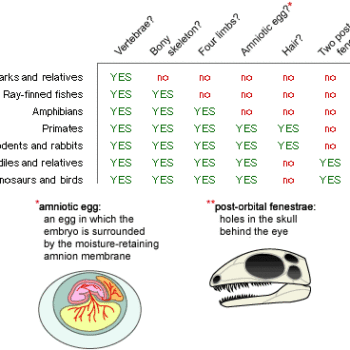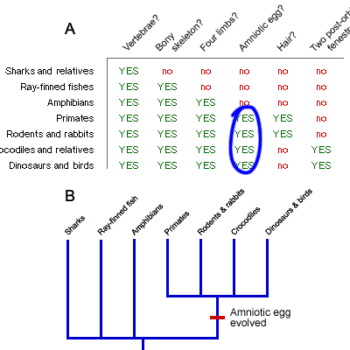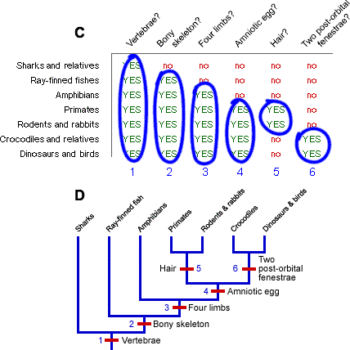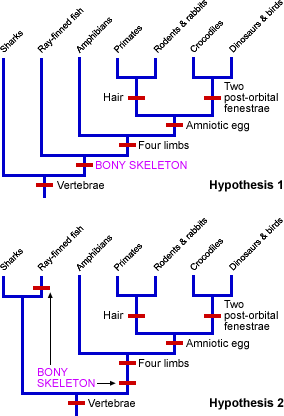Image Caption
The parsimony principle tells us to choose the simplest scientific explanation that fits the evidence. Hypothesis 1 requires six evolutionary changes and Hypothesis 2 requires seven evolutionary changes, with a bony skeleton evolving independently, twice. Although both fit the available data, the parsimony principle says that Hypothesis 1 is better since it does not hypothesize unnecessarily complicated changes.
Image use policy: For non-commercial, educational purposes, this image may be used with a Creative Commons CC BY-NC-SA 4.0 license. Please credit as follows: © University of California Museum of Paleontology, Understanding Evolution, www.understandingevolution.org
See where this image appears on the Understanding Evolution website »
This image is part of a series:

Parsimony (1 of 5) Vertebrate character matrix
Character data for some major vertebrate lineages. Characters were limited to characters that are likely homologous (note that many vertebrate lineages and many characters were excluded from this example for…
Parsimony (2 of 5) Vertebrate ancestor characters
From studying fossils and lineages closely related to the vertebrate clade, we hypothesize that the ancestor of vertebrates had none of these features.
Parsimony (3 of 5) Amniotic egg clade and phylogeny
We focus in on the group of lineages that share the derived form of the egg character, an amniotic egg (A), and hypothesize that they form a clade (B.)

